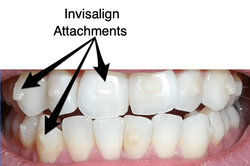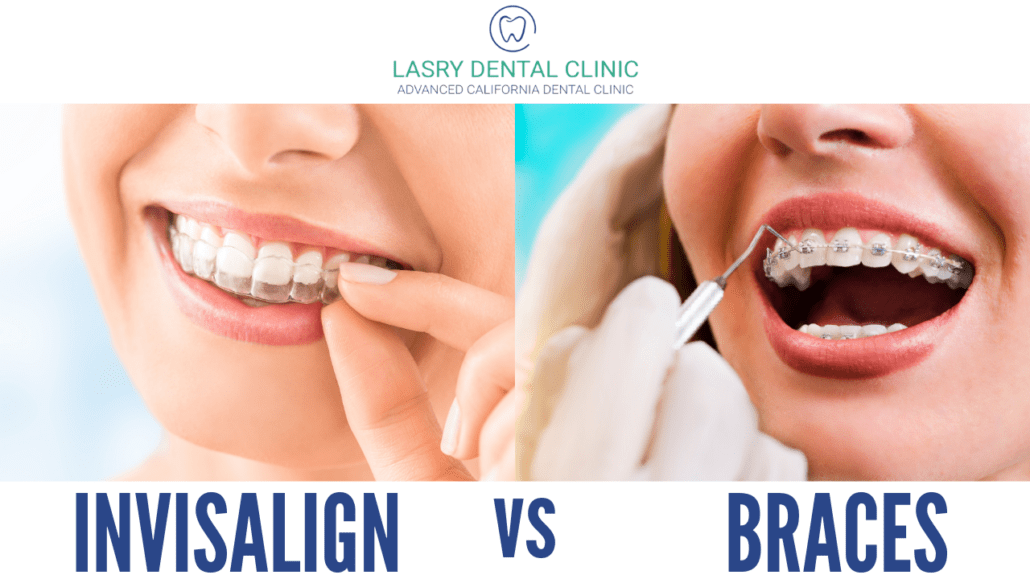Invisalign for Teenagers: A Modern Solution to Straightening Young Smiles
Wiki Article
Invisalign vs. Traditional Dental braces: Which Alternative Is Right for You?
When thinking about orthodontic therapy, the option in between Invisalign and conventional braces presents a number of crucial factors that merit careful assessment. Invisalign uses a very discreet choice with removable aligners, while traditional braces give an extra noticeable yet effective option for severe misalignment. Each alternative encompasses unique benefits and drawbacks associated to looks, convenience, treatment period, and price. Comprehending these subtleties is crucial for making a notified decision that aligns with your individual preferences and way of life. The question remains: which choice will ideal fulfill your orthodontic needs and expectations?Summary of Therapy Alternatives

On the other hand, conventional braces contain metal braces and wires that are bound to the teeth. This method uses continuous pressure in time to accomplish alignment. While effective for complex orthodontic concerns, typical dental braces require routine visits for adjustments and can present challenges in keeping dental health due to the trouble of cleaning up around brackets and cables.
Both alternatives have their qualities, and the option usually pivots on details dental problems, way of living choices, and client compliance. Inevitably, speaking with an orthodontic specialist is important for identifying the most ideal treatment plan customized to specific demands. Comprehending the subtleties of each choice can dramatically influence the overall success of orthodontic treatment.
Aesthetic Considerations
A significant element influencing the selection in between Invisalign and conventional braces is the aesthetic appeal each therapy offers. Invisalign aligners are crafted from clear plastic, making them practically invisible when used. This very discreet look is especially attracting young adults and grownups who may feel self-conscious about their orthodontic therapy. The ability to maintain an all-natural smile throughout the positioning procedure can substantially improve the client's self-confidence in social and professional setups.On the other hand, conventional braces include metal braces and cables, which can be more noticeable. While innovations in orthodontic technology have caused the advancement of smaller sized brackets and colored elastics, standard braces still keep an even more obvious profile. For some people, the visibility of braces might deter them from looking for required treatment.
Ultimately, the option in between Invisalign and conventional braces might rest on personal choices pertaining to aesthetic appeals. Individuals who prioritize discernment frequently favor Invisalign, while those who are less concerned regarding presence might choose for standard dental braces. Understanding the aesthetic effects of each choice is vital for making a notified decision that aligns with one's lifestyle and preferences.
Comfort and Convenience

In regards to ease, Invisalign aligners are removable, allowing clients to enjoy their favorite foods without limitation and maintain ideal oral health. Brushing and flossing are streamlined, as the aligners can be secured during these routines, whereas traditional dental braces call for mindful navigating around cords and braces.
Furthermore, Invisalign's progressive system enables less orthodontic sees. Patients typically receive numerous collections of aligners simultaneously, which can improve reference the therapy process and reduce time invested in the orthodontist's chair. In contrast, typical braces require normal changes, making them much less practical for those with active routines. Invisalign. In general, the convenience and convenience of Invisalign make it an attractive choice for numerous individuals seeking orthodontic therapy.
Treatment Duration and Efficiency
While both Invisalign and traditional braces work in fixing dental misalignments, the duration of treatment can differ substantially between both options. Usually, Invisalign treatment can take anywhere from 12 to 18 months, relying on the intricacy of the case. The clear aligners function by gradually shifting teeth right into their desired positions, and routine follow-ups with an orthodontist assistance ensure development continues to be on course.
On the other hand, conventional dental braces frequently need a longer dedication, typically varying from 18 months to three years. This results from their fixed nature and using braces and cords, which can be much more efficient for intricate instances and severe misalignments (Invisalign). The treatment efficiency of standard dental braces is well-documented, as they enable accurate adjustments and higher control over tooth motion
Ultimately, the selection between Invisalign and traditional dental braces may depend upon both the anticipated therapy duration and the certain oral concerns handy. Consulting with an orthodontist is important, as they can supply customized recommendations based on private demands, guaranteeing the chosen technique aligns with desired timeframes and results.
Expense Contrast and Insurance Policy Options
Price plays a significant internet duty in the decision-making process for people considering orthodontic treatment, whether deciding for Invisalign or standard dental braces. Usually, the price of Invisalign ranges from $3,000 to $8,000, while traditional braces commonly cost in between $2,000 and $6,000. Factors influencing these costs include the complexity of the situation, the duration of treatment, and geographical area.Insurance coverage can considerably affect out-of-pocket costs. Several oral insurance policy strategies give partial insurance coverage for orthodontic treatments, but the specifics can differ commonly. It is vital for people to evaluate their insurance coverage to figure out the degree of protection for either option. Usually, typical braces might be extra regularly covered by insurance plans contrasted to Invisalign, which some insurers categorize as an aesthetic treatment.
Additionally, numerous orthodontic practices offer versatile payment plans, making both treatment alternatives extra available. People ought to ask about prospective funding options and price cuts for upfront repayments. Examining the overall cost, consisting of insurance policy advantages click resources and payment plans, is necessary for making an educated choice that aligns with both visual choices and budget considerations.

Verdict
In recap, the selection in between Invisalign and standard dental braces rests on multiple aspects, including visual choices, convenience, treatment period, and cost. Invisalign offers a discreet, detachable option that assists in dental hygiene and nutritional versatility, while traditional braces might be preferable for complex oral concerns and commonly come at a lower rate point. Inevitably, appointment with an orthodontist is important to assess individual circumstances and establish the most ideal treatment choice for achieving ideal dental alignment.When considering orthodontic treatment, the option between Invisalign and conventional braces offers several crucial aspects that warrant cautious analysis.Comparing Invisalign and traditional dental braces discloses distinctive therapy alternatives for orthodontic correction.While both Invisalign and traditional dental braces are efficient in fixing dental misalignments, the period of therapy can differ substantially in between the 2 choices.Cost plays a significant function in the decision-making procedure for individuals thinking about orthodontic treatment, whether choosing for Invisalign or typical dental braces.In summary, the selection between Invisalign and traditional braces hinges on several elements, consisting of aesthetic preferences, comfort, therapy period, and expense.
Report this wiki page